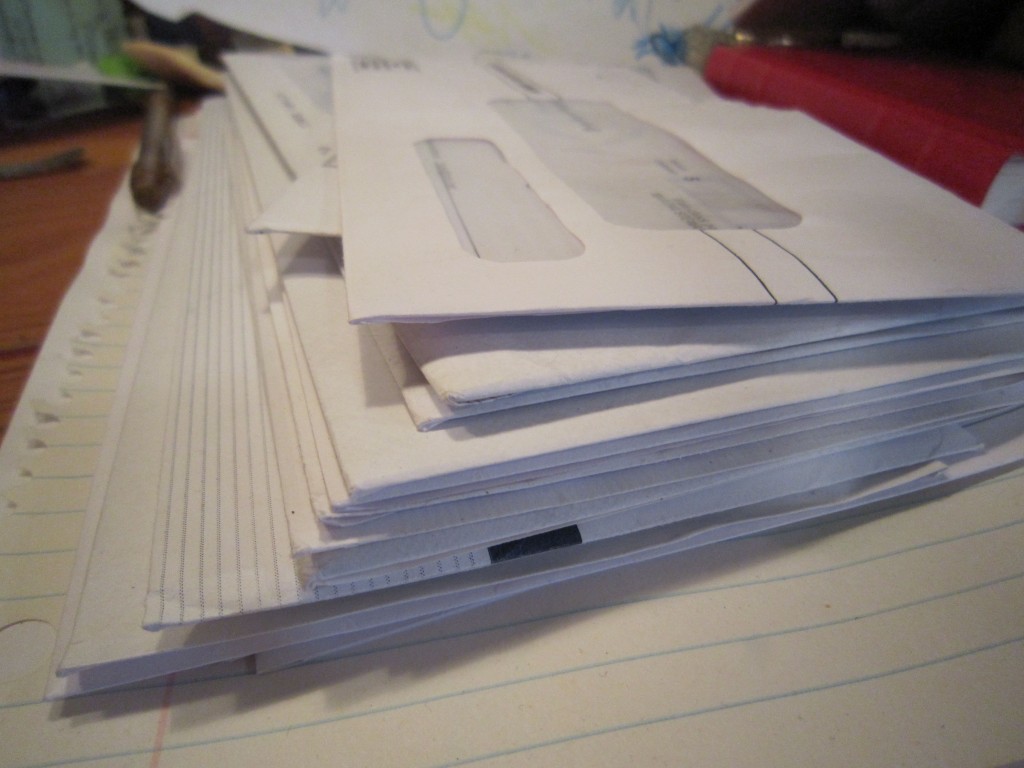Rain. Slow, steady, glorious rain. Florida desperately needs it. I didn’t realize how much I needed it. The sound helps focus and calm me. The pervading damp gives me permission to postpone my many outdoor tasks. Rain removes the excuses that keep me from planting my rear in the chair and writing about budgeting. I’m not resistant to writing itself, just to the hard work of examining our expenditures that I must do first.
Number crunching is not my strong point. So why am I taking on the 30 Large Project? Because I want to continue to grow and learn, because what one focuses on becomes stronger, because of the platitude “ignore it and it will go away” also applies to money.
My DH may, or may not, agree, but it seems to me we spend on whatever we want, whenever we want it. Denial is not in our vocabulary. Although our income is fairly secure, it is certainly not exorbitant. Hence, I am in the early chapters of All Your Worth, preparing for the worst.
Step One of the budgeting process in Warren’s book is to figure out how much we are spending on needs, wants and savings. I have decided to focus on the needs category first, and the rest should follow from there. To do this I first had to get a handle on where all the money is going, which for us, was difficult.
After a teeth-gritting, round-one look at the household income and expenses, with a look to how much we spend on needs (shouldn’t be over 50 percent of after tax income), I have been forced to realize there is no gain (in the form of a “lifetime money plan”) without a whole bunch of pain.
“Needs” includes certain types of expenditures that I decided to group two ways. First, I listed things we have a legal obligation to pay: student loans, mortgages, basic utilities, auto and home insurance, gym membership, cell phone contract, and preschool.
And, second, I included things we need to survive: medical prescriptions, health insurance, food, transportation, life insurance and retirement plan.
Even as I type this list of what I included, I see some things shouldn’t be in there – obviously the retirement plan should be in “savings”. Clara’s school should be in “wants,” since I am not working and we could remove her if we had to for a small fee. I need to refer to the book to see where life insurance should go. Also, I have found that our gym membership contract is up and we now pay monthly — so we can move that to wants. See — I was not expressing false modesty when I wrote I wasn’t good a number crunching. I found errors before hard math was required.
After shifting these items, I totaled the cost of our needs and divided it by our after-tax income multiplied by 100. I found we spend about 63 percent of our after-tax income in the needs category. Ugh.
A quick glance at what is left over and my worst fears are realized – it seems that the remainder goes primarily toward wants. Cable television is a want, after all.
So, what to do to bring our “needs” number down? Warren is no nonsense in her advice: basically, she says, get real. She directs readers to assess the big-ticket items first, since those have the greatest impact on the bottom line. Leading me to my next assignment – slash, slash, slash. I’ll report back soon.







